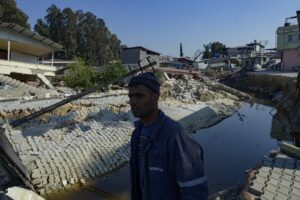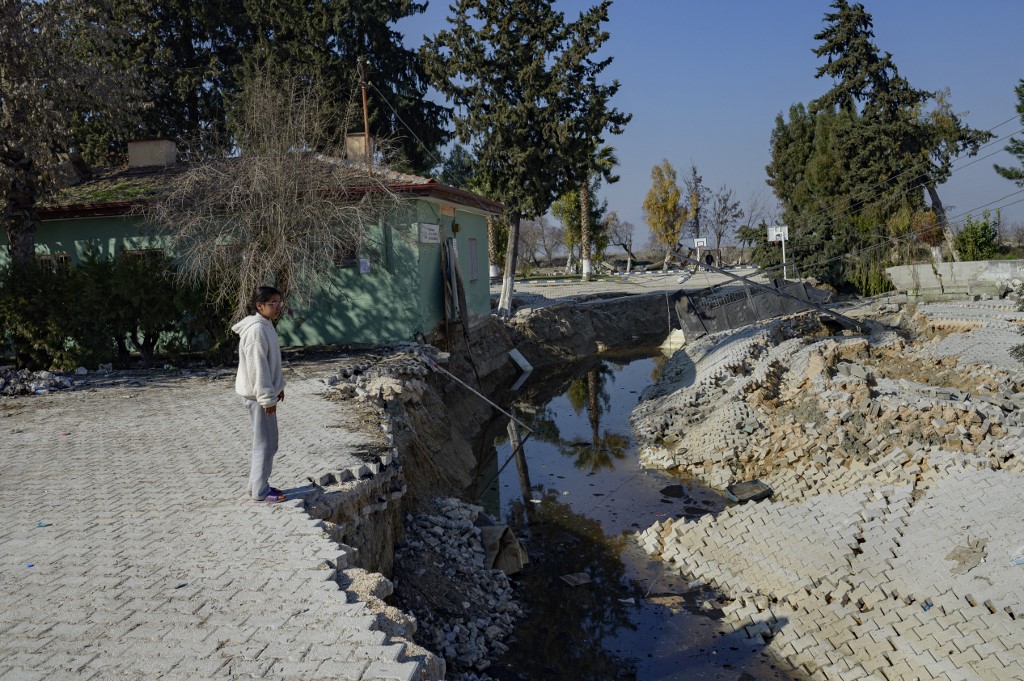The small, grey house in southern Turkey that once looked out onto the road might appear untouched by last week’s huge earthquake, but it is now one floor lower.
Surrounding the building in Demirköprü village, home to 1,000 people, are bits of debris floating in murky water, broken pavements, and lopsided houses.
The February 6 earthquake and its aftershocks that ravaged swaths of Turkey and Syria and killed more than 44,000 people have split Demirköprü in two.

“The houses sank four meters (13 feet),” said Mahir Karataş, a 42-year-old farmer and owner of the grey house. “The ground went up and down.”
Half a dozen buildings close to Karatas’ house seem to have suffered the wrath of God. The body of a black and white cow is stuck in dried mud inside what remains of a farm shed.
Fortunately, no one died in Demirköprü despite the heavy damage, but some were injured.
Rescue efforts in Hatay province have largely focused on Antakya, an ancient city that has been torn apart by the quake, 20 kilometers (12.5 miles) away from Demirköprü.
During the temblor, the water rose from below ground and then stagnated, residents said.
The ornately paved road no longer exists. Some bits are now a meter higher than others.
“Here, it became like an island,” Murat Yar, a 38-year-old roofer, said.
“It went up, down, up, down, and then it slid down 30 meters. We saw water and sand gushing out,” he added, mimicking the tremor’s waves with his hands.
‘Really scared’
Residents could “jump out from the windows of their one and two-story homes,” Yar said, unlike in Antakya, where people lived in multi-story homes.
When the quake hit, the villagers scrambled to safety in an area designated by authorities in case of any tremors. But such was its force, even that cracked.
In front of a school whose gate was thrown 20 meters away is a yawning gap that zig zags, but no damage is visible on the building’s facade.
Further away, four buildings belonging to another school appear like dominoes piled on top of a large earthen mound.
“I told myself, ‘we’re dead, we’re finished’,” Yar said.
Hatice Şahan, a 58-year-old woman, summed up how everyone felt on February 6: “We were really scared.”
© Agence France-Presse

